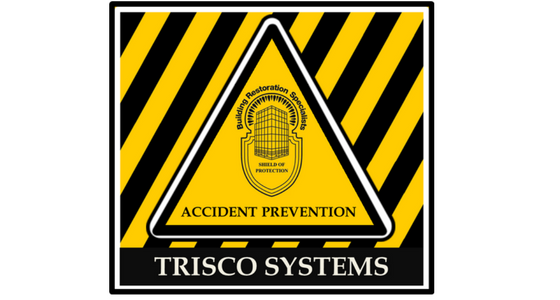In 2016, the Occupational Safety and Health Administration (OSHA) revised the standard which regulates the hazards associated with respirable crystalline silica in the work place. Though not entirely new, the revised standard has dramatically reduced the exposure limits for workers and has added many new requirements for employers. There are incredible costs associated with compliance, and
the implementation of these new standards is certain to shock the pricing structure in our industry. OSHA expects these new rules to prevent a significant number of worker deaths per year from silica-related diseases, the importance of which outweighs the cost.
What is respirable crystalline silica and what does it mean?
Crystalline silica is a mineral component that is found in many natural materials such as glass, ceramics, bricks, sand, concrete, stone, and mortar. Respirable crystalline silica (dust) – very small particles typically 100 times smaller than sand – is generated by operations such as cutting, blasting, sawing, grinding, drilling, sweeping, etc. Inhaling particles of airborne crystalline silica can cause diseases such as silicosis, lung cancer, chronic obstructive pulmonary disease, and kidney disease. In 2014, more workers actually died from
silicosis than fires or from being crushed in trenches.
What are the key provisions of the new standard?
1. The primary purpose is to significantly reduce workers’ exposure to respirable silica.
2. Employers must use engineering controls to limit this exposure. An example is utilizing a water delivery or vacuum system on any saws, grinders, chippers, or drills when they are used on silica containing materials. Localized exhaust ventilation and process isolation may also be utilized to remove the dust from the vicinity of the worker. If engineering controls do not work, employers must provide respirators for workers.
3. Housekeeping activities such as sweeping, dumping debris in dumpsters, etc. must be restricted.
4. Air monitoring must also be performed on a regular basis, both at the point of the “dust” generating procedure and at other areas within proximity to the work area.
5. The employer must make medical surveillance available at no cost to workers. This surveillance includes a cardio-pulmonary function test, a respirator fit test, a chest x-ray, a tuberculosis test, and others. Medical surveillance and record-keeping is the responsibility of the employer, not the employee.
6. A written Crystalline Silica Exposure Control Program must be developed and must be available to all employees. The plan must include several key components. Employers must provide air-monitoring and medical testing to provide proof that their Crystalline Silica Exposure Control Program is working.
What are the costs associated with compliance?
1. Implementation and training costs for educating employers and employees.
2. Air monitoring of work operations to establish baselines and the associated laboratory fees.
3. New equipment, modifications to existing equipment, and other costs associated with engineering controls.
4. Loss of productivity and efficiency due to changes in the way that work is performed.
5. Increased project durations and the associated general condition costs.
6. Medical surveillance costs (x-rays, monitoring and air testing, cardio-pulmonary tests, record-keeping).
What can you do?
Educate yourself. This rule doesn’t only affect the contractor who is creating the hazard. It is very important to understand the regulations when discussing a proposed project with your contractor. This is especially important because most projects occur on the exterior of occupied buildings. Contractors who do not take this seriously are not only putting themselves and their workers at risk, but they also put the customer, the building occupants, and the public at risk. This is also important to consider on a multi-trade
construction project where there are other workers in close proximity. Ask your contractor to provide you with a copy of their Crystalline Silica Exposure Control Program and review how they will specifically address your project.


